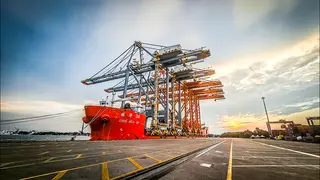The Cabinet is set to take a call on privatising Dredging Corporation of India (DCI) but opinion is split on the value proposition that could accrue to the buyer in the domestic dredging market where foreign firms have started winning large contracts though the business is reserved for Indian ships according to local laws.
“The aim is to upgrade technology, improve capability, infuse capital to buy necessary dredgers/ equipment and instil experienced professional management to optimise the operations of DCI,” a Shipping Ministry official said, asking not to be named ahead of a Cabinet decision on the plan.
India’s dredging market is seen at ₹20,000 crore by 2020, according to government estimates.
The government, which owns 73.47 per cent stake in Mumbai-listed DCI, considers the firm based in the port city of Visakhapatnam a “laggard”.
India’s biggest dredging contractor earned ₹599.69 crore from running 19 dredgers of different categories and reported a net profit of ₹7.40 crore in the year ended March 2017. It has a debt of ₹700 crore on its books.
“DCI has a lot of dredging equipment,” says a senior executive with one of the dredging companies. “If someone wants to increase their portfolio of dredging equipment, buying DCI would definitely benefit. And, possibly trained manpower,” he said.
Some experts, however, suggest that entities looking to buy DCI would be able to get “better equipment” with the money spent on acquisition.
“DCI’s dredgers are meant only for maintenance dredging and not designed to do capital dredging,” said a consultant who advises the firm. “The entity buying DCI will have to spend at least ₹300 crore to buy some good spares to re-furbish the dredgers to boost performance,” he said, asking not to be named.
Operational costsBesides, DCI dredgers are not designed to operate with less personnel. While, a dredger owned by a European dredging firm can be run with 27 people, DCI’s dredgers require at least 40 people to operate, raising operational costs, he said. “But, the number of equipment DCI has would require a few thousands of crores for someone to buy new ones. Plus, the waiting period to get those equipment is at least 18 months. With the acquisition of DCI, the equipment is readily available. In dredging, the cash earners are your equipment. That becomes the selling point for DCI,” the executive mentioned earlier said.
The average age of the company’s fleet involved in maintenance dredging — where it holds the top slot in India — is 22 years while that of capital dredging is 30 years.
But, unlike merchant ships, dredgers don’t have age restrictions to operate as long as they hold safety certifications from ship classification societies.
For many years, DCI survived on assured business given by the Central government-owned port trusts on nomination basis (without tenders). This system was scrapped in the last decade. DCI now has to compete with other firms, both Indian and foreign, to win contracts at State-owned port trusts and elsewhere.
In fact, more than half of DCI’s annual revenues came from the maintenance dredging contract at Kolkata Port Trust and a big portion of the other half from Cochin Port Trust.
Stiff competitionDredging Corporation is now facing stiff competition from local rivals such as Adani Group, Mercator, Dharti Dredging and other global firms for securing jobs. Intense competition has resulted in dredging contractors quoting way below estimates to clinch contracts, hurting their margins.







Comments
Comments have to be in English, and in full sentences. They cannot be abusive or personal. Please abide by our community guidelines for posting your comments.
We have migrated to a new commenting platform. If you are already a registered user of TheHindu Businessline and logged in, you may continue to engage with our articles. If you do not have an account please register and login to post comments. Users can access their older comments by logging into their accounts on Vuukle.